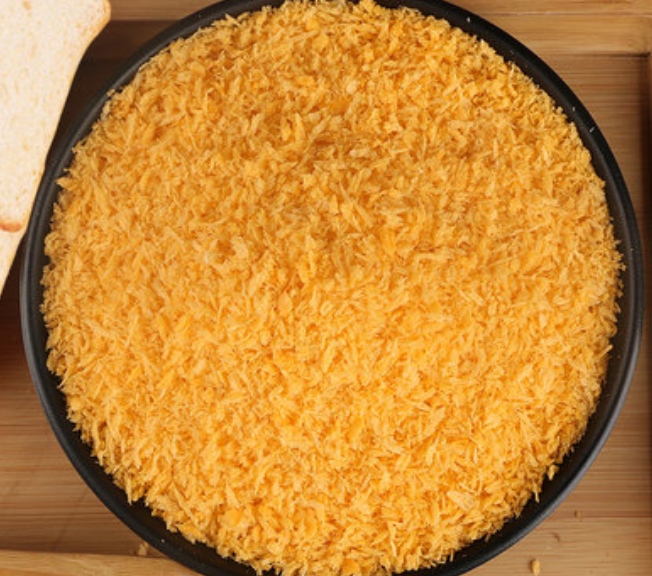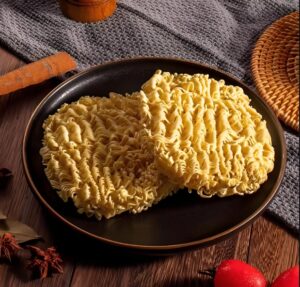<h1>Introduction to Expanded Bread Crumbs: A Comprehensive Guide for B2B Trade</h1>Expanded bread crumbs, also known as puffed or extruded bread crumbs, are a versatile ingredient widely used in the global food industry. These lightweight, airy particles are created through a specialized extrusion process that enhances their texture and functionality. For businesses involved in foreign trade, understanding expanded bread crumbs can open doors to new opportunities in food manufacturing and export markets.
bread crumbs production line
ToggleIn the B2B sector, expanded bread crumbs serve as a key component in products like coated snacks, frozen foods, and ready-to-eat meals. This article explores their production, benefits, applications, and market trends, providing valuable insights for importers, exporters, and manufacturers. By the end, you’ll gain a clear understanding of how to leverage this ingredient in your trade strategies.
What Are Expanded Bread Crumbs?
Expanded bread crumbs are finely processed particles derived from wheat, rice, or other grains. Unlike traditional bread crumbs, which are simply dried and ground, these undergo an extrusion process that involves heating and pressurizing the dough. This results in a puffed, porous structure that absorbs less oil and provides a crispier finish.
In B2B contexts, expanded bread crumbs are favored for their consistent size and shape, making them ideal for automated production lines. They are commonly used as coatings for items like chicken nuggets, fish fingers, and vegetable patties, enhancing both taste and appearance. For foreign trade professionals, sourcing high-quality expanded bread crumbs can improve product competitiveness in international markets.
The Manufacturing Process of Expanded Bread Crumbs
The production of expanded bread crumbs begins with selecting raw materials such as flour, water, and additives. These ingredients are mixed into a dough and fed into an extruder machine, where high heat and pressure cause the mixture to expand rapidly upon exiting. This puffing process creates the signature light texture.
After extrusion, the crumbs are dried, cooled, and sieved to ensure uniformity. Quality control is crucial in B2B manufacturing, with factors like moisture content and particle size affecting the final product’s shelf life and performance. In global trade, adhering to international standards like ISO 22000 helps exporters meet regulatory requirements in regions such as Europe and North America.
Advanced technologies, including automated sorting and packaging, have streamlined this process, reducing costs and waste. For businesses, partnering with reliable manufacturers can ensure a steady supply chain for expanded bread crumbs, supporting efficient export operations.
Benefits and Advantages of Expanded Bread Crumbs
One of the primary benefits of expanded bread crumbs is their superior oil absorption properties, which lead to healthier fried foods with lower fat content. This appeals to health-conscious consumers and aligns with global trends toward nutritious options, making them a smart choice for B2B food suppliers.
Additionally, these crumbs offer enhanced crispiness and extended shelf life compared to traditional varieties. In foreign trade, this means reduced spoilage during transit, lowering risks for exporters shipping to distant markets. Their neutral flavor also allows for easy customization, enabling manufacturers to create branded products that stand out in competitive landscapes.
From a sustainability perspective, expanded bread crumbs can be made from by-products of other food processes, promoting eco-friendly practices. B2B companies focusing on green initiatives often highlight this in their marketing, attracting environmentally aware buyers in regions like the EU and Asia-Pacific.
Applications in the Food Industry
Expanded bread crumbs are extensively used in the production of coated and fried foods. In the meat processing sector, they provide a golden, crunchy exterior for items like breaded chicken or beef patties, improving both texture and visual appeal for retail and food service clients.
Beyond meat, they are popular in vegetarian and vegan products, such as coated tofu or plant-based nuggets. For B2B traders, this versatility expands market reach, allowing exports to diverse segments including quick-service restaurants and packaged goods suppliers.
In emerging markets, expanded bread crumbs are gaining traction in innovative applications like gluten-free snacks. Exporters can capitalize on this by offering customized formulations, such as those made from rice or corn, to meet specific dietary needs and regulatory standards worldwide.
Market Trends and Global Trade Opportunities
The global demand for expanded bread crumbs is on the rise, driven by the growing popularity of convenience foods. According to industry reports, the market is projected to grow at a CAGR of over 5% through 2028, with Asia-Pacific leading due to increasing urbanization and fast-food consumption.
For B2B professionals, key opportunities lie in exporting to regions like the United States and Europe, where stringent food safety regulations emphasize quality ingredients. Trade agreements, such as those under the WTO, facilitate smoother imports, but businesses must navigate tariffs and certifications to succeed.
Emerging trends include organic and non-GMO variants of expanded bread crumbs, appealing to premium buyers. By staying informed on these shifts, exporters can differentiate their offerings and build long-term partnerships in the global supply chain.
Comparison with Traditional Bread Crumbs
Traditional bread crumbs are made by drying and grinding stale bread, resulting in a denser product. In contrast, expanded bread crumbs boast a lighter, more uniform texture, which enhances adhesion and crispiness in food coatings.
From a B2B standpoint, expanded varieties often have better storage stability, reducing the need for preservatives and extending export shelf life. While traditional crumbs are cheaper, the added value of expanded ones justifies the premium for manufacturers seeking high-performance ingredients.
In trade scenarios, expanded bread crumbs may require specialized packaging to maintain freshness, but their efficiency in production processes makes them a worthwhile investment for large-scale operations.
Quality Standards and Certifications
Ensuring high quality is essential in the B2B trade of expanded bread crumbs. Standards like HACCP and FDA compliance help verify safety and hygiene, which are critical for exporters targeting regulated markets such as the EU.
Certifications for organic or Halal production can further boost marketability. Businesses should conduct regular audits and source from certified suppliers to avoid recalls and maintain trust with international buyers.
By prioritizing quality, companies can command higher prices and foster repeat business, turning expanded bread crumbs into a reliable revenue stream in foreign trade.
Frequently Asked Questions
What is the difference between expanded and regular bread crumbs? Expanded bread crumbs are produced through extrusion, resulting in a lighter, crunchier texture, while regular ones are simply ground bread and may absorb more oil during frying.
How long can expanded bread crumbs be stored? When packaged properly, they can last up to 12 months in a cool, dry environment, making them suitable for long-distance exports.
Are expanded bread crumbs suitable for gluten-free products? Yes, they can be made from gluten-free grains like rice, catering to dietary restrictions and expanding their appeal in global markets.
What factors affect the cost of expanded bread crumbs? Costs depend on raw material quality, production scale, and certifications, with bulk purchases often offering better rates for B2B traders.
How can businesses source expanded bread crumbs for export? Partner with reputable manufacturers or use platforms like Alibaba for sourcing, ensuring compliance with international trade regulations.
Conclusion
In summary, expanded bread crumbs represent a dynamic opportunity in the B2B foreign trade landscape, offering enhanced functionality, market versatility, and alignment with global trends. By understanding their production, benefits, and applications, businesses can optimize their strategies for success in competitive markets. Whether you’re an exporter seeking new products or a manufacturer innovating recipes, investing in expanded bread crumbs can drive growth and profitability in the evolving food industry.









